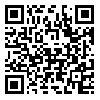دوره 22، شماره 3 - ( 7-1404 )
جلد 22 شماره 3 صفحات 45-40 |
برگشت به فهرست نسخه ها
Download citation:
BibTeX | RIS | EndNote | Medlars | ProCite | Reference Manager | RefWorks
Send citation to:



BibTeX | RIS | EndNote | Medlars | ProCite | Reference Manager | RefWorks
Send citation to:
Aramideh F, Mohammadi S, Shamsalinia A, Kaveh O. The effect of digital coloring on the level of state anxiety and pulse rate in elderly patients before diabetic foot ulcer surgery: A quasi-experimental study. J Res Dev Nurs Midw 2025; 22 (3) :40-45
URL: http://nmj.goums.ac.ir/article-1-2017-fa.html
URL: http://nmj.goums.ac.ir/article-1-2017-fa.html
The effect of digital coloring on the level of state anxiety and pulse rate in elderly patients before diabetic foot ulcer surgery: A quasi-experimental study. Journal of Research Development in Nursing and Midwifery. 1404; 22 (3) :40-45
چکیده: (1053 مشاهده)
Background: Given the anxiety experienced by patients awaiting diabetic foot ulcer surgery, evidence supporting the efficacy of preoperative art therapy can be clinically valuable. However, evidence on the effectiveness of digital coloring, a modern and accessible form of art therapy, remains limited. This study aimed to investigate the effects of digital coloring on state-trait anxiety levels and pulse rate in elderly patients scheduled for diabetic foot ulcer surgery.
Methods: This quasi-experimental study employed a pre-test–post-test design with intervention and control groups. The study was conducted from January 2023 to July 2024 at a referral teaching hospital in Amol, Iran. The participants were selectively assigned to either an intervention group (n=30) or a control group (n=30) via purposive sampling. Both groups received standard preoperative care, but one hour before the scheduled surgery, the intervention group received a one-session digital coloring. Data were collected using a demographic questionnaire and the State-Trait Anxiety Inventory (STAI Form Y-1). The variables were assessed at baseline and immediately after the coloring session in both study groups. An analysis of covariance (ANCOVA) was conducted to compare post-intervention state anxiety between the intervention and control groups, while controlling for pre-intervention anxiety levels. Data analysis in SPSS v25 employed χ², Fisher’s exact, paired, and independent t-tests, with significance set at p <0.05.
Results: Both study groups were homogeneous in terms of gender, age, and education level. Baseline anxiety (p=0.43) and pulse rate (p=0.12) were similar between groups. Post-intervention results revealed a clinically meaningful reduction in the intervention group (43.20±3.70) versus controls (50.33±6.18), with a significant between-group difference (p<0.001, d=1.42). The between-group difference in pulse rate was also significant (p=0.002), with a large effect size (Cohen’s d=0.87).
Conclusion: Our findings suggest that the digital coloring intervention may be associated with reductions in state anxiety and pulse rate among elderly patients awaiting diabetic foot ulcer surgery. Given that this intervention is simple, inexpensive, and easily accessible, we recommend its use to alleviate state anxiety in clinical settings that typically provoke anxiety, such as during diagnostic procedures.
Methods: This quasi-experimental study employed a pre-test–post-test design with intervention and control groups. The study was conducted from January 2023 to July 2024 at a referral teaching hospital in Amol, Iran. The participants were selectively assigned to either an intervention group (n=30) or a control group (n=30) via purposive sampling. Both groups received standard preoperative care, but one hour before the scheduled surgery, the intervention group received a one-session digital coloring. Data were collected using a demographic questionnaire and the State-Trait Anxiety Inventory (STAI Form Y-1). The variables were assessed at baseline and immediately after the coloring session in both study groups. An analysis of covariance (ANCOVA) was conducted to compare post-intervention state anxiety between the intervention and control groups, while controlling for pre-intervention anxiety levels. Data analysis in SPSS v25 employed χ², Fisher’s exact, paired, and independent t-tests, with significance set at p <0.05.
Results: Both study groups were homogeneous in terms of gender, age, and education level. Baseline anxiety (p=0.43) and pulse rate (p=0.12) were similar between groups. Post-intervention results revealed a clinically meaningful reduction in the intervention group (43.20±3.70) versus controls (50.33±6.18), with a significant between-group difference (p<0.001, d=1.42). The between-group difference in pulse rate was also significant (p=0.002), with a large effect size (Cohen’s d=0.87).
Conclusion: Our findings suggest that the digital coloring intervention may be associated with reductions in state anxiety and pulse rate among elderly patients awaiting diabetic foot ulcer surgery. Given that this intervention is simple, inexpensive, and easily accessible, we recommend its use to alleviate state anxiety in clinical settings that typically provoke anxiety, such as during diagnostic procedures.
| بازنشر اطلاعات | |
 |
این مقاله تحت شرایط Creative Commons Attribution-NonCommercial 4.0 International License قابل بازنشر است. |




